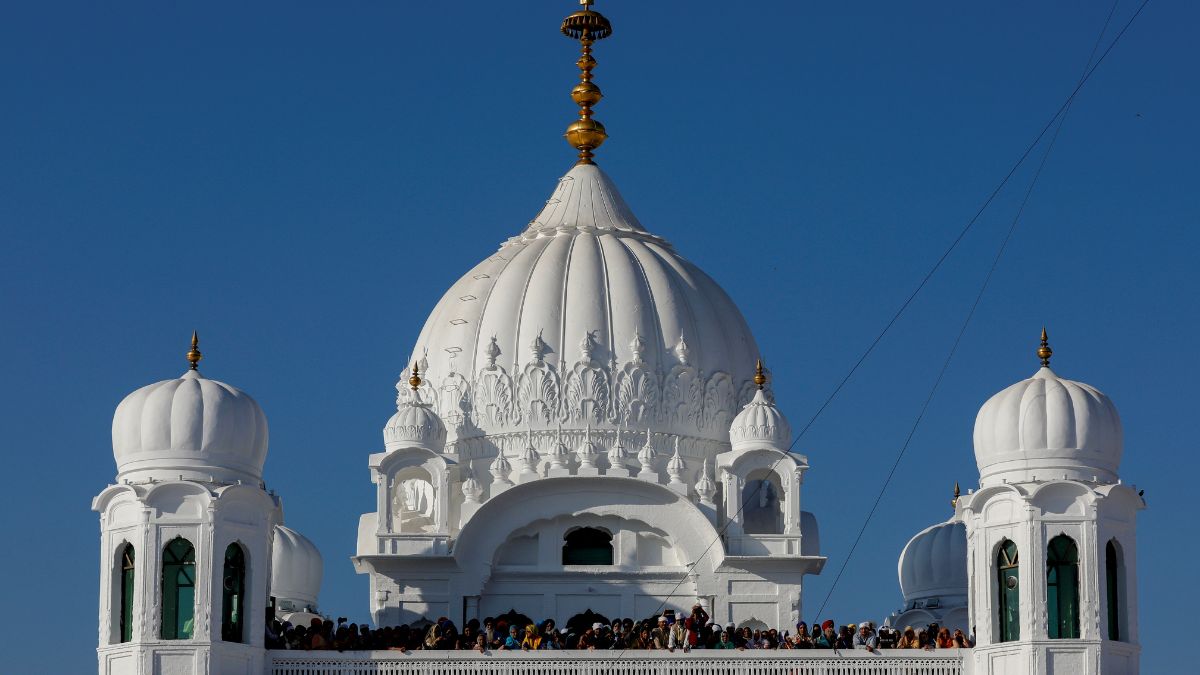India and Pakistan have agreed to extend the validity of the agreement to operate the Kartarpur Corridor for another five years. This will help Indian devotees to visit the Kartarpur Sahib Gurudwara in Pakistan without a visa.
“The Agreement, signed on 24 October 2019 to facilitate the visit of pilgrims from India to Gurdwara Darbar Sahib Kartarpur, Narowal, Pakistan through the Kartarpur Sahib Corridor, was valid for a period of five years,” the Ministry of External Affairs (MEA) said in a statement on Tuesday (October 22), adding that the renewal of the pact until 2029 would facilitate “uninterrupted operation of the Corridor for use by the pilgrims from India to visit the holy Gurdwara in Pakistan”.
The MEA also said it has urged Pakistan not to levy a service fee of $20 (Rs 1682) on the pilgrims. The announcement comes a week after External Affairs Minister S Jaishankar went to Pakistan for the Shanghai Cooperation Organisation (SCO) meeting, the first such visit by a foreign minister in nine years.
India and Pakistan have renewed the agreement on Sri Kartarpur Sahib Corridor for the next five years.
— Dr. S. Jaishankar (@DrSJaishankar) October 22, 2024
PM @narendramodi’s government will continue to facilitate our Sikh community’s access to their holy sites.
🔗 : https://t.co/0fr3WTBhnc
What is the Kartarpur Corridor agreement? Why is the religious site in Pakistan important? Let’s understand.
Kartarpur Corridor pact
In 2019, New Delhi and Islamabad signed an agreement to facilitate Indian pilgrims to visit Gurdwara Darbar Sahib Kartarpur in Pakistan’s Punjab.
The pact allows visa-free travel for Indian pilgrims and Overseas Citizen of India (OCI) cardholders to Pakistan to pay obeisance at Kartarpur Sahib gurudwara. About 5,000 visitors can visit the holy shrine through the Kartarpur Sahib Corridor.
India and Pakistan officials had signed the agreement at Zero Point, the international border between the two countries.
Kartarpur Sahib Corridor
The Kartarpur Corridor between India and Pakistan was inaugurated on November 9, 2019, to mark the 550th birth anniversary of Guru Nanak Dev, the founder of Sikhism.
Prime Minister Narendra Modi had unveiled the corridor and flagged off the first batch of over 500 Indian pilgrims, including former PM Manmohan Singh and the then Punjab Chief Minister Amarinder Singh.
Modi had inaugurated the passenger terminal building of the corridor on the Indian side, also known as Integrated Check Post. It is here that devotees get the clearance to travel through the 4.5-km corridor, linking the town of Dera Baba Nanak in Punjab’s Gurdaspur in India with the Kartarpur Sahib Gurudwara in Pakistan’s Narowal district.
The then Pakistan PM Imran Khan had inaugurated the Kartarpur Corridor at a ceremony on his side of the border, paving the way for Indian pilgrims to visit the holy shrine.
The Union Cabinet approved the development of the Kartarpur corridor in November 2018. The Indian government had also asked Pakistan “to recognise the sentiments of the Sikh community and to develop a corridor with suitable facilities in its territory from the International Border to Gurudwara Kartapur Sahib to facilitate easier access and smooth passage of India pilgrims through the year”.
After the Indian Cabinet’s announcement, then Pakistan’s Foreign Minister Shah Mahmood Qureshi tweeted that the Pakistani government “has already conveyed to India its decision to open Kartarpur Corridor for Baba Guru Nanak’s 550th birth anniversary”.
United Nations Secretary General Antonio Guterres hailed it as a “Corridor of Hope”.
The Sikh community has long demanded access to the corridor. The matter of access to the shrine was first discussed between India and Pakistan in 1998 and then again in 2004.
In 2008, the Congress government led by the then PM Manmohan Singh raised the issue of the proposed corridor but the plan did not come to fruition due to political tensions and cross-border terrorism.
A decision was finally taken in 2018, with the two sides signing the Kartarpur Corridor agreement next year.
Importance of Kartarpur Sahib gurudwara
Gurudwara Darbar Sahib Kartarpur is one of the most revered places of worship for Sikhs. It is believed Guru Nanak Dev spent his final days in Kartarpur Sahib from 1521 to 1539.
The 1947 Partition left Kartarpur on Pakistan’s side. As per ThePrint report, for decades, Indian devotees had to go to Lahore to reach the religious site, travelling 125 km, even though it is just a kilometre away from the India-Pakistan border.
“The political division of the Indian subcontinent in 1947 was, also in some measure, a spiritual division as the new states established complex systems of regulation to control the access of pilgrims from the two countries,” scholar Gurharpal Singh wrote in The Control of Sacred Spaces.
The current shrine was built in 1925 after the original was destroyed by floods. It was constructed by Bhupinder Singh, the Maharaja of Patiala and grandfather of BJP leader Captain Amarinder Singh.
The Pakistani government restored the structure in 2004.
Speaking to ThePrint in 2019, Yogesh Snehi, professor of History at Ambedkar University in Delhi, said, “The corridor is a significant effort to bridge the ruptures of Partition history in Sikh memory. This occasion gives Hindu devotees of Nanak or Nanakpanthis an opportunity to reinstate their association with Sikh tradition. It offers us a major hope of healing a heavily mutilated history of South Asia.”
As per the Indian government, as many as 1.92 lakh devotees from India have visited the gurdwara in Pakistan through the Kartarpur Sahib corridor in the past three years.
With inputs from agencies


)

)
)
)
)
)
)
)
)



